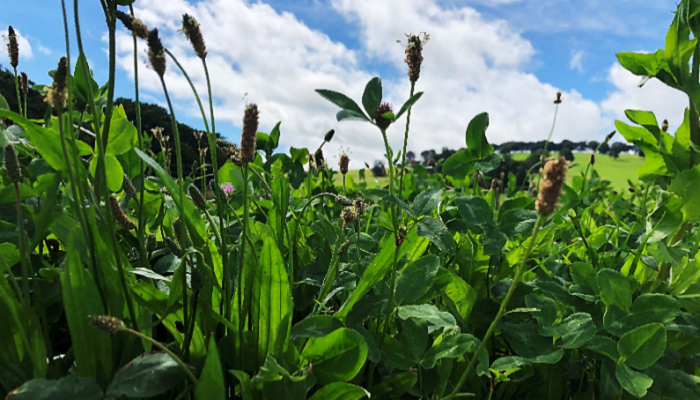12 October 2023
Taking steps to improve sustainability on a west Cork dairy-beef farm

James O’Sullivan, a Teagasc DairyBeef 500 Campaign and Teagasc Signpost Programme participant, is implementing steps to improve the sustainability of his west Cork holding.
Joining Catherine Egan on a recent episode of the Beef Edge podcast, James detailed how he’s farming two blocks totalling 31ha in Union Hall, west Cork.
90 calves were purchased this year, up for 80 in years previous. Operating a split system between steers and heifers, his target is to achieve a 280kg carcass at slaughter. Health is number one for James when buying calves. He tries to target early calves and the majority of this year’s calf crop were purchased between mid-January and the end of February.
Up until two years ago, he was buying all calves from marts. Now James buys directly from farm and it’s working out well for him. An AI technician by trade, James has access to local dairy herds and buys calves from four farms at the moment. This arrangement allows for the genetics of the calves to be assessed prior to purchase.
When calves come onto his farm, he makes sure they have plenty of access to dry straw, water and concentrates. He lets them settle for two days and then they get vaccinated. The calves are fed twice a day for seven weeks and once a day after that. They have access to grass for a few weeks before they are weaned and this helps to ease the transition. They also have access to a paddock near the shed during the day. There is a bit of work in it but it’s worth it, as they have had no setbacks in transitioning to grass fulltime.
Cattle finishing
Last year’s cattle were finished off grass but carcass weight was a little light at 240-250 kg, lighter than the target. A few things contributed to that – not knowing the genetics and issues with pneumonia were just two.
In the last 100 days before slaughter, 75% are finished off grass. At the end of August, James picks the best and feeds them at grass for 6-7 weeks. It works for him, as it takes pressure off the system. He doesn’t have to make big quantities of silage for older cattle, meaning that most of his winter feed is for the weanlings. He also has less pressure in the spring in closing up ground for silage as his demand is lower.
Multispecies swards
James has incorporated multispecies swards into some of his paddocks. On the management of this swards, he said: “Last summer came very dry, so it was mid-June before I got it in. It got three bags of 10-10-20 and 2 tonne lime. It has done very well.
“I am managing it very similar to grass and graze every three weeks in the main grazing season. I have to mind it a little more in wet weather because it’s more open – especially this year in April and May. There was some damage done but it has recovered well.
“In 2022, the chicory was very dominant so I needed to keep on top of grazing it every three weeks so it didn’t get out of control,” James explained.
In terms of fertiliser, the multispecies swards on James’ farm received 2,000 gallons of slurry and 20 units of protected urea after grazing in mid-February. No fertiliser was applied all summer and one bag of 10-10-20 was applied in early September.
James is happy with the performance of sward and has noted that the clover element, which took over since mid-summer, has been driving the swards performance.
Along with multispecies swards, James also has paddocks containing a grass / white clover mix and has further plans to incorporate clover on his farm. On this he said: “I have some fields that need clover incorporated into them. In the past I was afraid of clover due to the risk of bloat, but now I am very happy with it in the last few years. I will put in some more multispecies swards. I will see how I get on with the red clover but I may consider putting in more in the next few years.”
Listen into the Beef Edge podcast below where James provides more insights from his farm:
Find out more about Signpost Sustainability Month 2023
